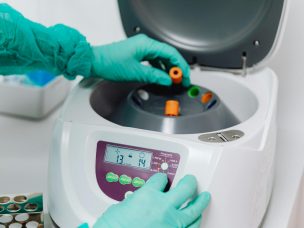In this MD Newsline exclusive interview with vitreoretinal specialist Dr. Murtaza Adam, we discuss how to provide culturally sensitive care and overcome language barriers.
MD Newsline:
How have you been able to implement culturally sensitive care in your practice?
Dr. Murtaza Adam:
“Cultural sensitivity was a large component of my medical education. It wasn’t taught in specifics but in a more comprehensive way. There’s no formula to practice culturally competent care because it’s really difficult to know the ins and outs and expectations of different cultures.
For me, it’s as simple as taking the time to listen and show respect for the person in front of me and developing a relationship with that patient. If there is something that I do that might be a faux pas, and I perceive that verbally or nonverbally, I make sure that I’m curious and that I ask about it. I think showing curiosity about cultural differences engenders mutual respect.
For example, I have a patient who, for her, contact with a man, in terms of shaking his hand, is unacceptable, and I didn’t know that before I attempted to shake her hand. Her brother was there to politely point that out to me. So we’ve come up with a simple namaste to say hello. It is something that she laughs about now because she remembers that time when I made that mistake.
But I took it in stride, and, fortunately, she did too, I think because of the demeanor and attention that I gave to the situation. And so I think if you take that approach, no matter the culture of the person that’s in front of you, you’ll be successful in developing and maintaining a good doctor-patient relationship in the long term.”
MD Newsline:
How do you deal with language barriers so that they don’t impede your ability to deliver quality care?
Dr. Murtaza Adam:
“When I used to practice in the academic setting, we had access to interpreter phones, in which you could dial a number and have any language you can think of interpreted for you in a matter of minutes. In our private practice, we don’t have that luxury, but we do have in-person interpretation services available for most patients. We try to have an official interpreter because family can sometimes censure or change the message in ways that a trained medical interpreter wouldn’t do.
And so, we have a policy in our practice to always have medical interpreters available, and I think that policy has been a huge factor in making sure that the communication we have with our patients and the care we provide are not compromised because of a language barrier.
Thanks to the pandemic, we are still communicating virtually by video with our non-English-speaking patients. For example, I recently did a surgical case with a patient who is Russian-speaking. We had an iPad mounted to a stand. This patient was not medically stable enough to undergo general anesthesia, so we did the surgery he needed under local anesthesia with an anesthesiologist in the room, providing a mild sedation.
And we rolled that iPad into the operating room, right next to the patient, where he could hear the person interpreting for me in Russian. The interpreter was able to see me and hear me and see and hear the patient underneath the drapes. And we were able to complete his surgery safely and successfully. Those extra steps that we take for non-English-speaking patients make a world of difference.
I can’t imagine the fear that I would feel if I received healthcare services in a country where I didn’t understand the language. And so, we do everything in our power to make sure that our patients understand the goals of treatment, the expected outcomes, the risks, and the benefits—we go over everything. But you have to take the time.
That can be really hard in a busy clinic, but if you do it that first time you meet the patient, I think it really pays off down the line. You’re not having any second-guessing or repeated explanations that may have been cut short in the past. If you put the time in upfront for non-English-speaking patients, I think you can achieve an excellent quality of care, equivalent to the care that a native English-speaking patient would receive.”
Responses have been condensed and lightly edited.









